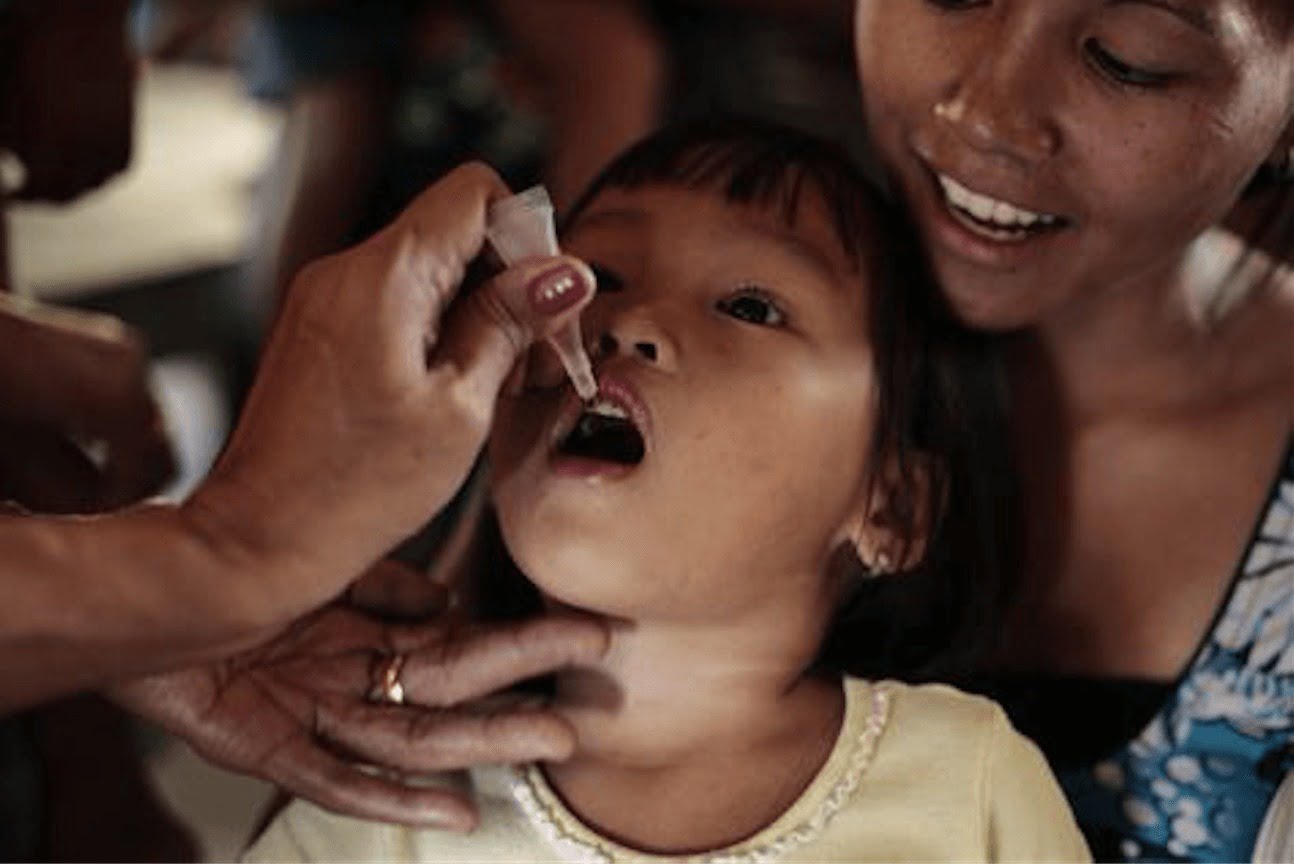Nineteen years after polio was officially eradicated in the Philippines, the incurable disease has made a resurgence due to widespread fears about vaccines.
On September 14, health officials in the Philippines confirmed the first case of polio, involving a three-year-old girl, in nearly two decades. By September 19, an outbreak was declared after a second case, involving a five-year-old boy, was confirmed.
Polio is a highly infectious disease that is caused by the poliovirus. Although about 72 percent of people infected with the virus will not experience any symptoms, according to the Centers for Disease Control and Prevention (CDC), if the virus invades an infected person’s brain and spinal cord, it can cause permanent muscle paralysis or even death.
Children under five years old face the highest risk of contracting polio, according to the World Health Organization (WHO). Despite the fact that polio cannot be treated, it can be prevented with a series of vaccines.
Successful vaccination campaigns have driven down polio cases from about 350,000 cases in 1988 to 33 reported cases in 2018, and wild poliovirus is now only endemic in (or transmitted within) three countries: Afghanistan, Pakistan and Nigeria. However, countries – like the Philippines – that have eradicated indigenous wild poliovirus are still susceptible to outbreaks if the virus is brought in from another country by an infected person or if it spreads within the country from a vaccine-derived strain.
That’s right – polio can spread from the vaccine, but it’s only a threat if enough people have not received all of their polio vaccines. And that’s exactly what’s happening in the Philippines.
According to the WHO, when a child receives an oral polio vaccine, the vaccine contains a weakened vaccine-virus that triggers an immune response in her body, protecting her from both wild and vaccine-derived poliovirus in the future. But the child also excretes the vaccine-virus. Even in areas where there is inadequate sanitation, this is usually not a problem, because the excreted vaccine-virus can protect other unvaccinated children in close contact (passive immunization) before dying out after a few weeks.
However, if a community is “seriously under-immunized,” as the WHO puts it, the excreted vaccine-virus can continue to circulate. And over the course of 12 to 18 months, it can mutate until it genetically changes into a paralytic form.
“If a population is fully immunized, they will be protected against both vaccine-derived and wild polioviruses,” says the WHO. “Hence, the problem is not with the vaccine itself, but low vaccination coverage.”
But since 2017, a wave of fear and skepticism surrounding vaccines has been sweeping the Philippines, resulting in a measles outbreak at the beginning of the year and a dengue epidemic this summer.
It all began when French pharmaceutical firm Sanofi Pasteur released a statement in November 2017 that its new dengue vaccine, Denvaxia, posed a risk of more severe dengue for people who have not been previously infected by the virus. It led to a congressional investigation into the deaths of 600 children who had received the vaccine and a dramatic drop in public confidence about all vaccines, including measles and polio. Whereas 93 percent of parents in the Philippines in 2015 “strongly agreed” that vaccines are important, only 32 percent thought so in 2018.
Nevertheless, widespread vaccination is the only way to combat the current polio outbreak, so health officials in the Philippines as well as international organizations, including the WHO, UN Children’s Fund (UNICEF), Red Cross and others, are mobilizing resources and workers to urgently carry out mass immunization campaigns. And until polio is eradicated globally, sufficient vaccination coverage will be critical to keep the threat at bay.
Related: The Inside Story of How India Defeated Polio
Download this episode to listen later. You can subscribe on iTunes, Stitcher, and Spotify
